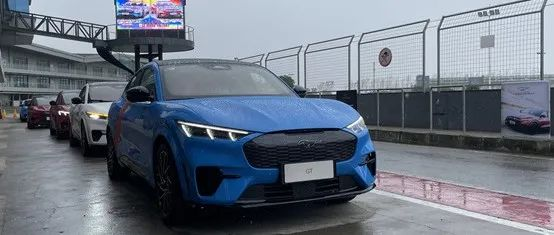Author: Unknown LYNX
Recently, whenever I think of the Ford Mustang Mach-E, I feel a bit emotionally conflicted and have mixed feelings.
Why is that? Let’s go back in time to April of this year, when the Mustang Mach-E made its shining debut on the eve of the Shanghai Auto Show, causing a lot of attention at the time.
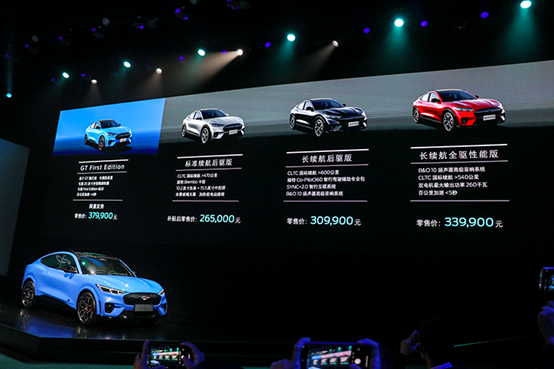
The reason why this car is so eye-catching is simply the value for the money – at the time, the entry-level price of the domestically produced Tesla Model Y in China was still 347,900 yuan. Therefore, people originally expected the price range of the Mustang Mach-E, which is also from the United States and has a similar positioning, to be around 350,000 yuan.
Who would have thought that the domestically produced Mustang Mach-E would really bring surprise. The prices of the four models announced at the time ranged from RMB 265,000 to RMB 379,900:
-
Standard Range Rear-Wheel Drive: CLTC range greater than 470 kilometers, selling price after subsidy of RMB 265,000;
-
Extended Range Rear-Wheel Drive: CLTC range greater than 600 kilometers, selling price of RMB 309,900;
-
Extended Range All-Wheel Drive Performance: CLTC range greater than 540 kilometers, selling price of RMB 339,900;
-
GT First Edition: CLTC range greater than 480 kilometers, selling price of RMB 379,900.
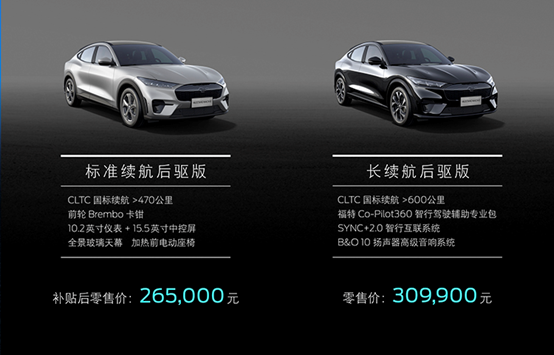

If you still don’t have a clear understanding of the above numbers, you can take a look at the information graphic of the Mustang Mach-E VS Model Y released by Ford China at the time.
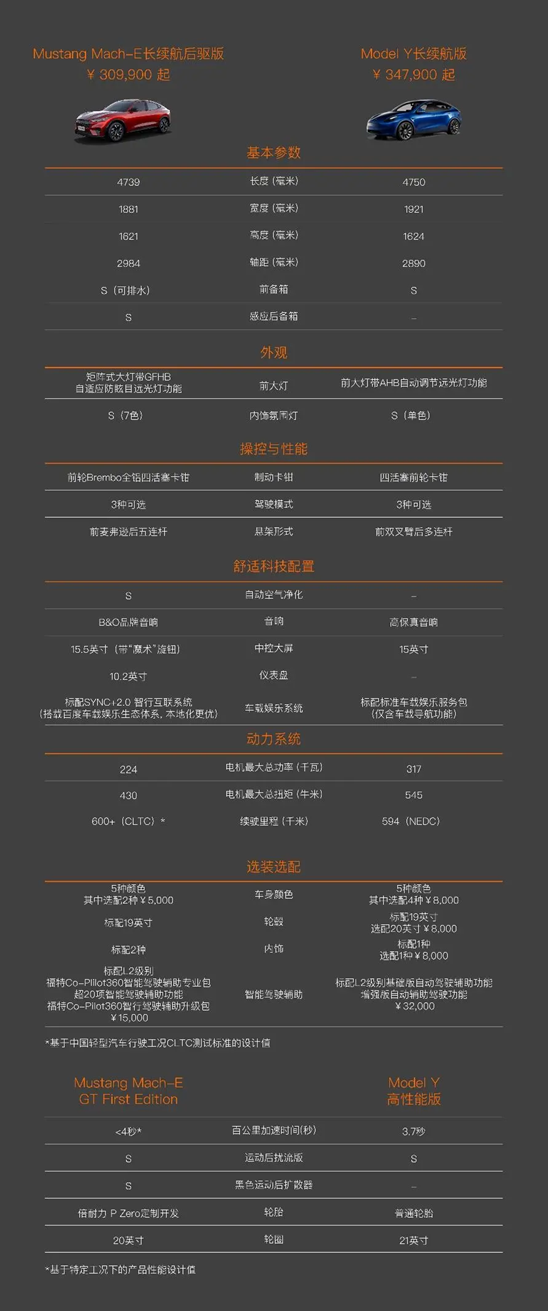
In addition, at the time in the United States, the monthly sales volume of the Mustang Mach-E also showed a trend of catching up with the Model Y, and even some sensitive American media bluntly stated in their reports: “The Mach-E is taking over the Model Y’s market share, with up to seventy percent of its sales coming from Tesla’s potential customers.”
The Model Y killer is the positioning given to the Mustang Mach-E by Ford China, hoping that the car will also stage a good drama of taking over Tesla’s potential customers in China.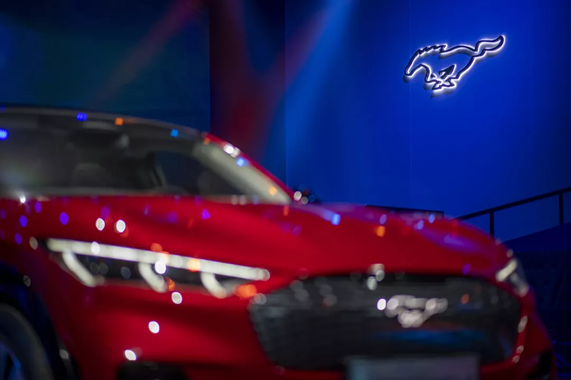
From Ford’s subsequent actions, this mindset has been consistent.
The most obvious example is that in July of this year, Tesla launched the standard range Model Y in China for CNY 276,000, and Ford quickly followed suit by releasing the Mustang Mach-E long-range rear-wheel drive SE version for CNY 282,000, demonstrating its determination to compete with Tesla.
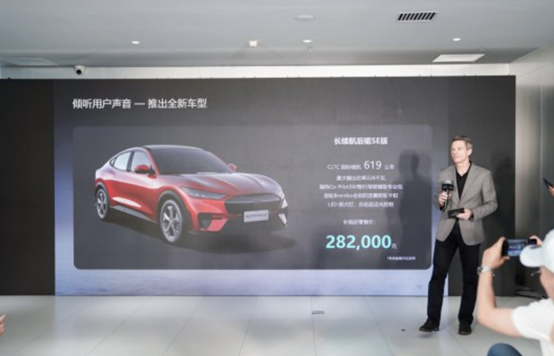
So here comes the question: as Model Y’s sales in China continue to soar, with a peak monthly sales of over 20,000, has Mustang Mach-E successfully countered Tesla?
The reality is clear, and there is still no sign of it so far. Because Mustang Mach-E has yet to deliver a single car.

While the cars are still unable to be delivered, Mustang Mach-E’s development in China has also been full of ups and downs.
Firstly, there is the turmoil within Ford’s internal team. Shortly after the product was launched, Zhu Jiang, the head of Ford China’s Mustang Mach-E electric car project, quickly resigned.
What is particularly intriguing is that rumors of his departure had already been circulating in the media before Mach-E’s launch. At the time, the person concerned staunchly denied the rumors, saying, “This news is too fake.”
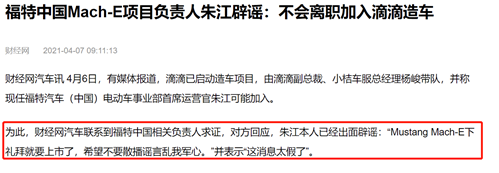
Secondly, the competition is fierce. As some media outlets jokingly said, “The real heat of Mustang Mach-E lasted only 48 hours.” Because within two days of the Mach-E launch press conference, another domestically produced electric car emerged and quickly occupied the top spot in terms of popularity. This car is called the Zeekr 001.
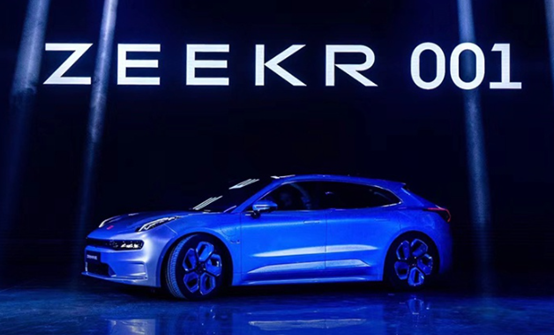
In addition, there is a hidden “unmentionable” issue with Mustang in China, which is that it does not have a Chinese name. In 2018, Ford lost a trademark litigation case against Changan Automobile’s wild horse logo, which meant that “Ford Mustang” could only use the same name as abroad and be called “Mustang” in China.Although it may seem a bit amusing, this has caused some trouble for Ford and consumers. When someone who is interested in the Mach-E wants to find more information and types “Ford Mustang” into a search engine, they might not be able to find the official website and product details right away.
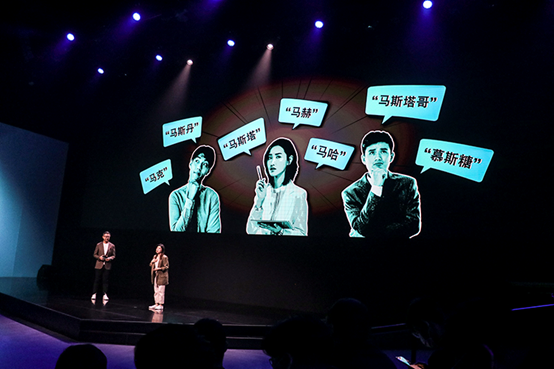
In order to maintain the popularity of the Mustang Mach-E and overcome various challenges, Ford naturally needs to continue its efforts in product development, marketing, sales channels, and other areas. On October 11th, Ford held a grand “Electrify the Future” brand event and announced the global debut of the Mustang Mach-E GT.
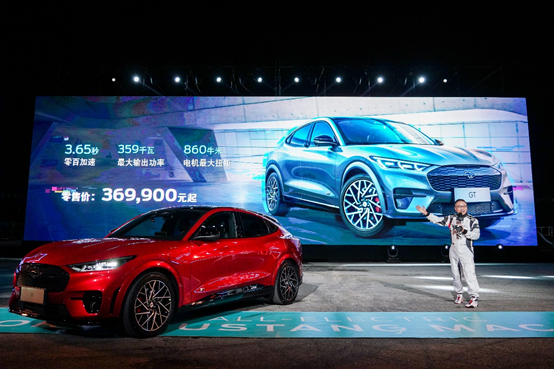
This “new car” has the same power system as the Mustang Mach-E GT First Edition that Ford announced in April, with a maximum power of 359 kW, maximum torque of 860 N·m, and 0-100 km/h acceleration in just 3.65 seconds, but priced 10,000 yuan less at 369,900 yuan.
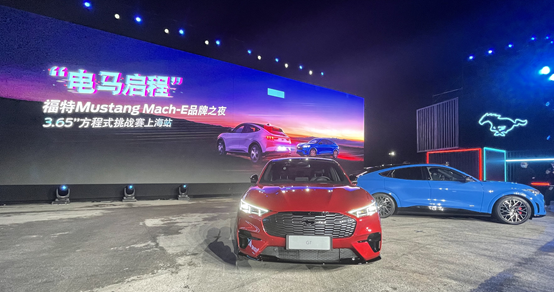
Meanwhile, based on user feedback and suggestions, Ford has renamed the model and will officially commence sales on October 18th. Customers who pay a deposit of 5,000 yuan can choose from a total of six versions of the Mach-E.
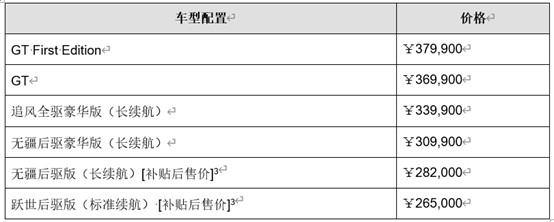
The estimated delivery time for the product is the fourth quarter, and the limited edition Mustang Mach-E GT First Edition will stop accepting reservations within the year.
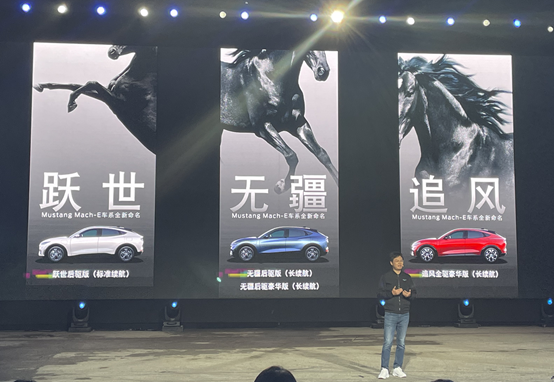
At this point, I believe many people have two questions in their minds:
-
What is the difference between the Mustang Mach-E GT and the limited edition First Edition model, considering the GT version is 10,000 yuan cheaper?
-
What is it like to drive the performance-oriented GT version?
Regarding the first question, since the vehicle has not yet been officially delivered, we can only try to find the answer from the appearance of the vehicle and descriptions in the official press release.From the appearance, there is not much difference between the two cars, only differentiated by colors, wheel rims, and nameplates on the body. The difference can be seen in the following pictures:
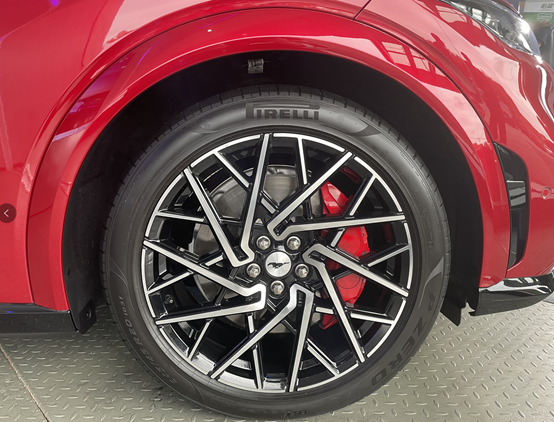
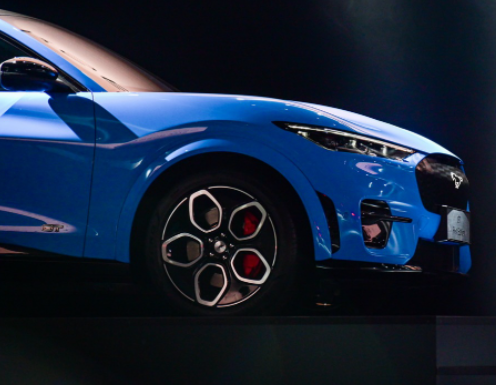
As for the colors, Ford stated that the “Star Blue Metallic Paint” that can be seen everywhere online will be exclusive to the First Edition. In the future, if you see a blue “Electric Horse” on the street, don’t doubt that it is the prestigious limited edition.

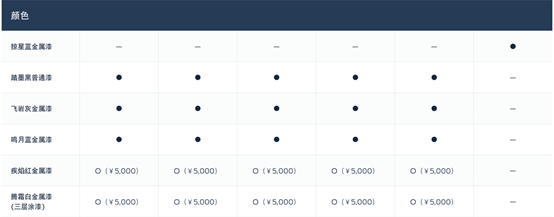
But it’s interesting that at the event, the GT model, which is ten thousand yuan cheaper, is also mostly blue. The reason for this is that currently, the test drive cars are all test-fitted vehicles.
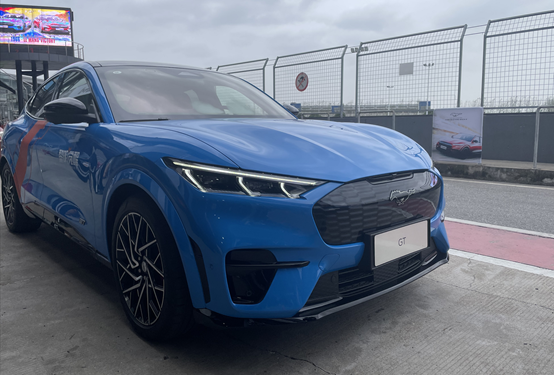
In addition, First Edition consumers will receive an official exclusive gift package, including customized track professional driving training courses, GT First Edition global limited edition 3D electric horse art installations, and Dawn Awakening joint limited-edition GT First Edition car models.
In short, if you have faith and persistence in the Mustang brand, you can directly spend 379,900 yuan to get a little more personality and exclusive identity. And if you just want to experience the performance and driving fun of the “Mustang GT,” it is also “very cost-effective” to save ten thousand yuan and buy the GT.
The GT has always been the top-level power model in the Mustang family. Ford also used a racing simulator to fine-tune the vehicle’s dynamic performance on the Mach-E GT and equipped it with customized tires and calipers.But to know whether it is good or not, a test drive is necessary. Therefore, on the second day after the Ford Brand Night, Ford organized a test drive experience activity to verify whether this car can live up to the name of “GT” at the Tianma Mountain Circuit in Shanghai.
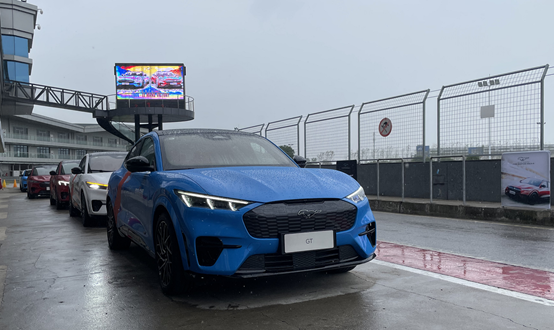
However, the weather was not good as it rained on the second day in Shanghai. The actual test drive was only about four laps around the two-kilometer circuit. So here are a few brief impressions.
The acceleration is fast enough. The 3.65-second maximum acceleration can bring roller coaster-like sensory stimulation. At the same time, this car is not just blindly fast. The 45:55 front-to-rear dynamic power ratio of the dual motor allows people to smoothly turn into turns as long as they find the right angle and gently step on the accelerator in the turns.
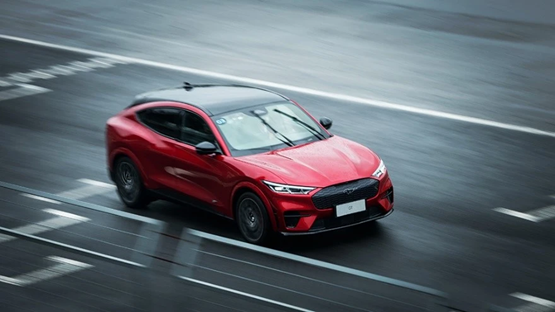
Meanwhile, the Mach-E has three driving modes: “Whisper”, “Engage”, and “Unbridled”, which can be simply understood as corresponding to the three common modes of comfort/economy, standard, and sport on fuel vehicles.
In the more emphasized sporty “Engage” and “Unbridled” modes, the steering wheel of the Mach-E is heavier, which can bring more precise directionality. Also, in these two modes, the engine sound can be simulated, trying to simulate the driving experience of fuel-powered cars as much as possible.
It is also worth mentioning Mach-E’s kinetic energy recovery system. Although in the single pedal mode, the vehicle can come to a complete stop when the accelerator pedal is fully released, the overall kinetic energy recovery force is relatively linear, which does not give people a sudden “instant stop” feeling.

Moreover, in the “Engage” and “Unbridled” modes, you can choose to turn off the single pedal mode and continue to “restore” the “foot feel” of fuel vehicles.
In summary, the Mach-E GT not only has powerful performance but also has excellent handling, which can give drivers enough confidence. However, this also brings a common difference in the handling of electric and fuel vehicles, that is, the steering wheel feels “heavier.”
“Very similar to a fuel vehicle” is the most common comment I heard during the whole test drive activity.
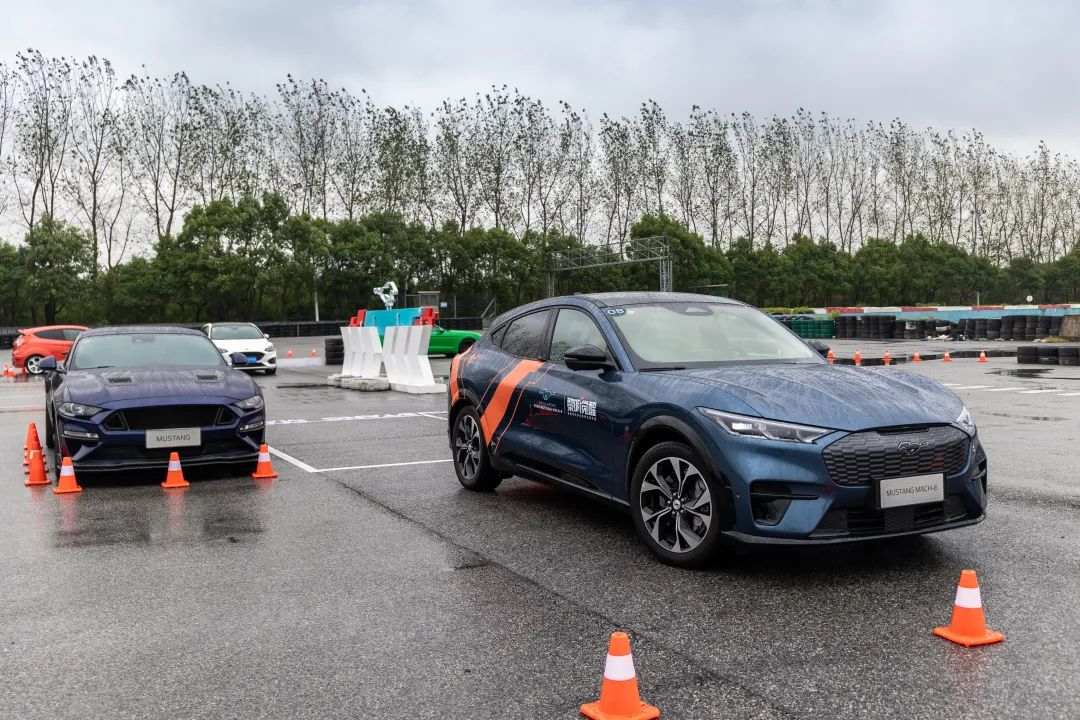
While releasing a new car and conducting a test drive, Ford also launched the Ford Select brand, which is exclusively for high-end intelligent electric vehicles, at the event on the same day.Ford reaffirms its commitment to extract electric vehicles from the fossil fuel system and establish an independent sales and service system. Specifically, Ford will accelerate the layout of its electric vehicle direct sales network and plans to open over 100 Ford electric vehicle city stores in the Chinese market by 2025. More Ford electric vehicles will be sold under the Ford Select direct sales network in the future.
Meanwhile, Ford will continue to improve user charging experiences and achieve a “3 km” replenishment circle in key cities. By the end of 2021, Mustang Mach-E users will have access to 400,000 high-quality public charging piles provided by 24 charging operators through the car owner app, including State Grid, TELD, Star Charge, Southern Power Grid, YKC, and WELink Energy. This includes 230,000 DC fast charging piles, covering over 349 cities nationwide and more than 80% of public charging resources.
Compared to the already established Tesla and new energy vehicle companies, Ford’s plans may seem late to the game. However, for a traditional fossil fuel car giant like Ford, portraying a positive attitude is still critical.
In fact, before this event, there were some “what-if” speculations within the Supercharging Station regarding the Mustang Mach-E. At the beginning of this year, the Mustang Mach-E was imported into the country. Although the price might not be as eye-catching, by combining the buzz the car carries from overseas with the reputation from the initial seed users in China, it can still pique the interest of domestic consumers.
Towards the end of the year, a locally produced version at a reasonably attractive price would be unveiled to gain more attraction, and deliveries would quickly proceed. This approach would keep the product’s attention and avoid delaying customer purchases.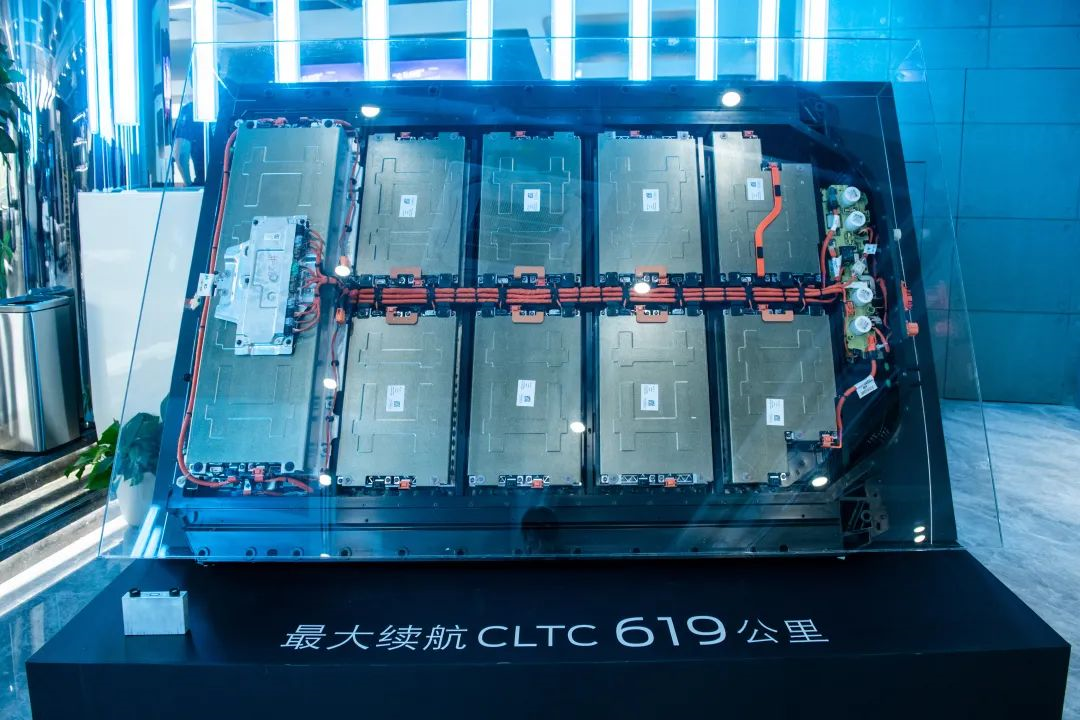
However, these are all our wishful thinking. There is no “if” in reality. Mustang Mach-E ultimately chose the “futures” marketing strategy that is currently popular in China. In the midst of confusion, this brand night event was less exciting, but gave people a sense of “Mustang Mach-E has changed its name and returned to the market” illusion.
In any case, before the actual delivery of the vehicle, any expectations for market performance can only be speculations. As for whether this sports and personalized electric horse can also have a smooth ride in the Chinese market, let’s wait and see. By this time next year, let’s see how many Mach-Es and Model Ys will be driving side by side on the streets.
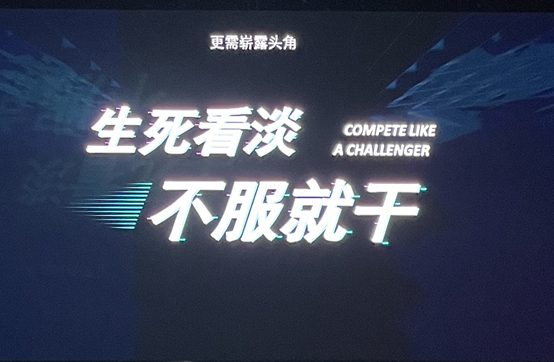
This article is a translation by ChatGPT of a Chinese report from 42HOW. If you have any questions about it, please email bd@42how.com.
